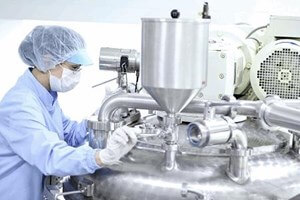In the pharmaceutical industry, precision is critical to success. Bad press from a recall of improperly made medical products can cause reputational damage that lasts for years. This is where Standard Operating Procedures (SOPs) come into play as an essential part of quality control.
An SOP is a set of step-by-step written instructions that document a work routine or repetitive activity performed by employees at a specific facility or organization. In pharmaceutical manufacturing, the main purpose of an SOP is to provide the necessary information for manufacturing employees to perform their jobs properly and consistently so that the end-product is the same every time. For example, an SOP may describe the process for using, calibrating and maintaining equipment that produces insulin for pediatric diabetes.
When a pharmaceutical company makes the decision to outsource manufacturing to a foreign country, SOPs must be translated and localized for foreign workers at the new manufacturing sites. The translated documents must keep the integrity, accuracy and regulatory compliance of these documents intact – which can be a significant challenge. The best strategy for tackling this challenge is to use a pharmaceutical translation service that employs translators who have subject matter expertise in the pharmaceutical industry. This strategy gives pharma companies three important benefits.
1. Ensuring that the original SOP is clear & complete
A translator’s examination of the original SOP document offers an opportunity to fix any clarity issues that it may contain. It is not uncommon for a translator to expose issues or errors that must be corrected in the original. Some examples include:
- Multiple interpretations – Though the document has likely already been vetted, and may even be the product of delicate negotiations, there still may be passages that are open to multiple interpretations. Such issues quickly become apparent to a translator looking to unambiguously convert meaning into another language.
- Missing steps – Otherwise unnoticed omissions in the instructions may become obvious to translators as they review the procedural steps. Such omissions can include minor interstitial actions that the original writer skipped by mistake, small details that change between steps, or perhaps an important action that hasn’t been clearly explained.
- Slang or jargon – The document may contain phrases that are colloquial or employ metaphors that only native readers will understand. Anne Catesby Jones, writing for Translation Journal, cites an example of an instruction to “place a gasket face up.” She points out, “For something to be face up, it should have a face. Does a gasket have a face? The outcome of that inquiry was to eliminate the phrase ‘face up’ and describe how the gasket would fit in to where it should be placed.” Another relevant example Jones mentions is that in English, “check for leaks” does not just mean to check and then move on. It includes the understanding that if any are found, they must be fixed. Subtleties like this are often difficult for a native speaker to spot, but are obvious to a qualified translator.
Note: Changes made to the original SOP should be documented within the SOP’s history section to ensure regulatory compliance.
2. Explaining processes correctly
When translating SOPs, a simple rule must be constantly applied: The SOP must describe processes exactly as they will appear to the operator. If a hardware knob or button is labeled in the native language – or any other language – it must also be referred to in that language in the translated document (right down to the capitalization). Likewise, the electronic text that appears on displays may – or may not – be shown in the language spoken at the production site. Whatever language the operator will see onscreen – regardless of their spoken language – must be identical to what is described in the translated SOP. The purpose here is twofold: it helps to ensure accuracy and reinforces confidence that the translated SOP instructions provided by the pharmaceutical company do, in fact, work.
3. Dealing with terminology
Terminology is an especially tricky area in pharma. Here is how a professional translation service can help:
- Consistency – Most terminology should be translated. However,certain terms are international and should be left in the original language. Knowing which terms to use – and applying them consistently – is critical to avoid confusion for the manufacturer that is utilizing your SOP. Even if words are used inconsistently in the original, the translated document can avoid this pitfall if it is produced by a professional medical translator.
- Regulatory knowledge – A certain amount of pharma terminology will inevitably be dependent on regulatory requirements. It is incumbent on a translator performing regulatory translation to have up-to-date knowledge of the applicable local and international pharma standards, and to make sure that the translated SOPs comply.
- Local brand sensitivity – In the original document, some objects may be identified by commonly understood, trademarked names, such as “Kleenex,” regardless of the actual brand of tissue being used. It’s important to be sensitive to trademarked names that may or may not be internationally recognized. When there are locally recognized trademark names, a certified translator can employ them to better reflect local language usage.
- Abbreviations – Abbreviations are an area in which the knowledge of a qualified medical translator is critical. Some abbreviations are required for local or international regulatory compliance, some exist only in the original language, and some have local equivalents. Abbreviation usage should be decided on a case-by-case basis by a professional translator who can determine what makes the most sense to the target audience.
SOP Translation Expertise
The rendering of high-quality, accurate, and useful SOP document translation services in pharma manufacturing requires a tremendous amount of knowledge and skill, as well as a native-level understanding of each target language. Using a professional LSP will give you access to a worldwide staff of translators who are experts in pharma manufacturing and have a deep understanding of the various cultures where your translated SOPs will be used.


